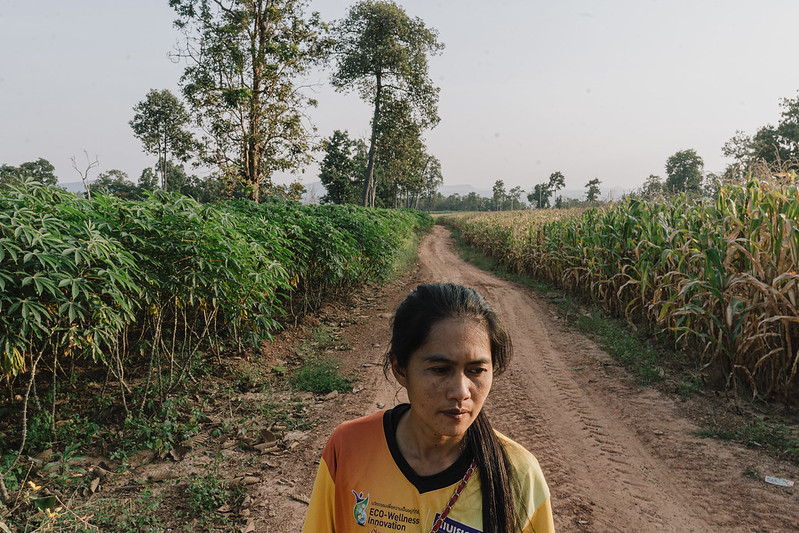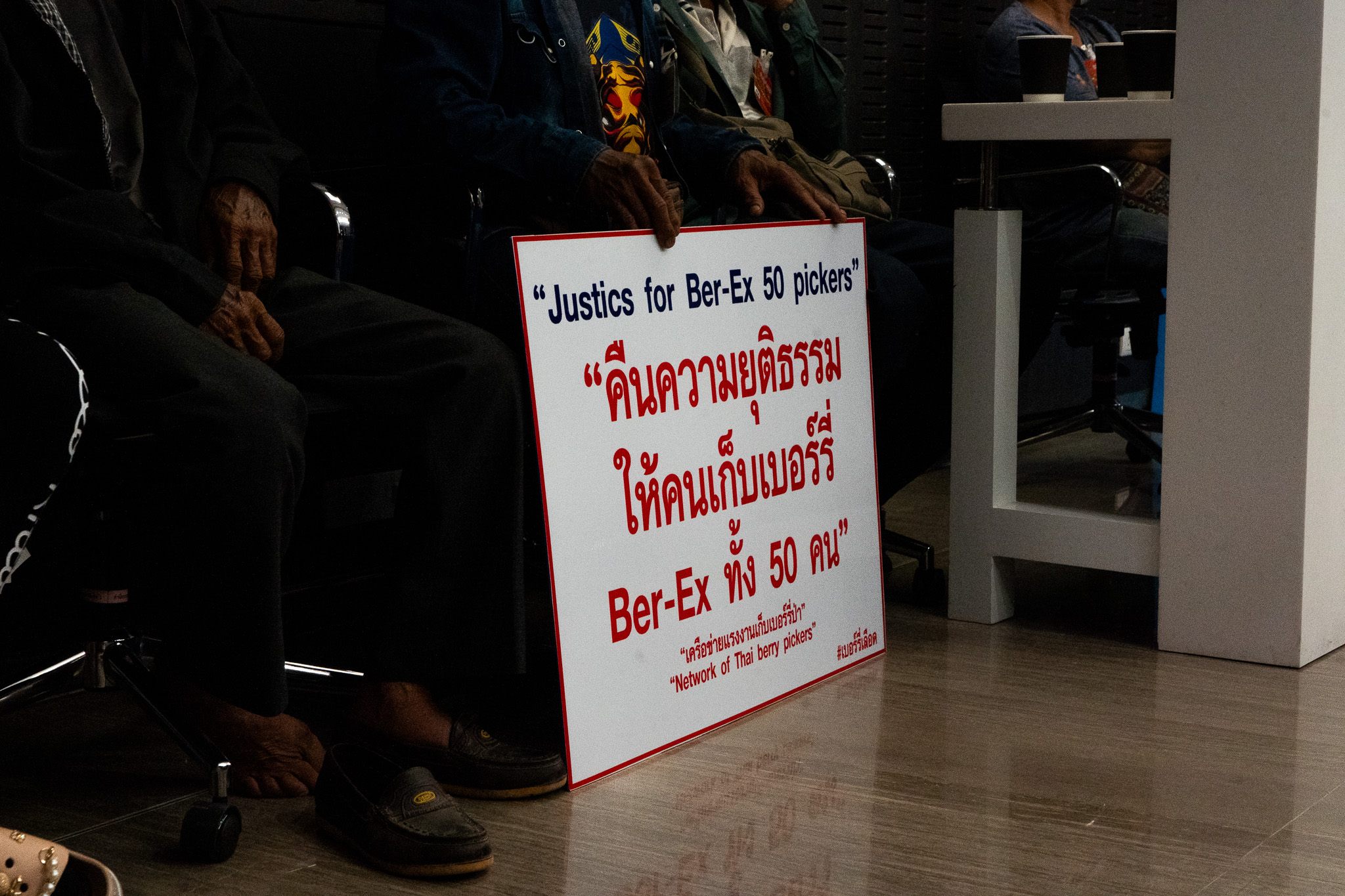
Guest contribution by Weerawat Somnuek
“Ban Na Dok Mai” in Udon Thani’s Non Wai subdistrict lies roughly 40 kilometers away from Ban Non Sung, once a hub of American military activity during the Vietnam War. The subdistrict is likely one of its kind in the region, with a large number of modern mansions housing hundreds of Western residents married to local women.
Beginning in 1961, the US military built a significant presence in Thailand during its engagement in Vietnam. Thai military bases became US military bases in all but name. From their runways, bombing raids on North Vietnam were launched.
In 1968, there were officially 11,494 US military servicemen stationed in the country. At the height of the war, this number rose to almost 50,000, most of whom were part of the United States Air Force. In Isaan, they operated out of Nakhon Phanom Royal Thai Navy Base, Ubon Royal Thai Air Force Base, Khorat Royal Thai Air Force Base, and Udon Royal Thai Air Force Base.
When the war ended, many US servicemen returned home to America but some others decided to continue their lives in Thailand.
Anan Ukthang, a 49-year-old resident of Ban Na Dok Mai, has lived alongside them in his village since childhood.
“I remember them coming to live in the village starting in 1975, when the Vietnam war ended,” Anan recalls.
The first ever white foreigner in Ban Na Dok Mai was a German man, who was working in Thailand before he married a local woman named Jampa. They moved to Laos during the Vietnam War. She must now be in her mid-70ies, Anan says.
He adds that over the past ten years, more and more women in the village have married Western men, including two of his own relatives.
Today, the community is home to hundreds of Isaan-foreign couples. Up to 500 foreigners married and settled in the area, according to an estimate by village chief Samruai Asasena. He names the USA, the UK, France, Belgium, Sweden, Norway, Switzerland, and New Zealand as their countries of origin.
In 2004, a survey conducted by the Office of the National Economic and Social Development Council found that almost 20,000 Isaan women were married to foreigners. Data from the Udon Thani provincial registry survey shows that in 2017 there were officially about 4,000 foreigners married to Isaan women living in the province, though they estimated that the actual number was closer to 10,000.

New beginning with a Western partner
Nattamon Somphan is a 46-year-old office clerk who lives in Ban Na Dok Mai. When she divorced her Thai husband, she became a single mother to her daughter, then aged nine.
“We didn’t see eye to eye on too many things, so we had to part ways,” Nattamon explains as to why her previous marriage failed.
According to a report by the Economic Intelligence Center of Siam Commercial Bank between 2007 and 2017, the number of divorces rose by 19.7 percent from 102,000 to 122,000. In the same period the number of new marriage registrations dropped from 313,000 to 298,000.
In 2007, Nattamon met Rolf Himmel, a Norwegian tourist, in Chonburi.
“After the failure of my first marriage I didn’t want to start a new family. I was just focusing on getting the means to raise my child and I didn’t think that I was attractive to Thai men,” Nattamon says. “Then I met Rolf who completely changed the way I saw things.
It surprised Nattamon that Rolf did not mind her being a single mother, which often turns out to be an obstacle for divorced Thai women when looking for a new partner.
“It didn’t bother him that I had a child, that I was a single mother,” she recalls. “He even gave me 10,000, 20,000 baht a month so that I could look after my daughter.”

After they first met each other, Nattamon and Rolf stayed in contact and continued to deepen their relationship by email. After many more meetings, Rolf decided to move in with Nattamon in Ban Na Dok Mai six years ago.
From Norway, he transferred three million baht to Nattamon to pay for the construction of a new house in which he would spend his retirement with his new partner. With a swimming pool, front lawn, and modern conveniences, their house stands out as one of the most luxurious and well-appointed homes in their corner of the community.
Nattamon’s comfortable lifestyle in her spacious home has earned her the ongoing attention of her neighbors. Many of them even urged her to put them in contact with foreign men as potential marriage partners.

From Norway to Udon Thani
Just like Nattamon, Rolf has been married once before. After retiring as a power plant technician, he got the idea to move to Thailand with his Norwegian monthly pension of around 70,000 to 80,000 baht.
Starting a new life in a foreign culture was not easy in the beginning, the now 68-year-old remembers.
“I had a lot of adapting to do when I first got here, especially with the food,” Rolf explains about what it was like as a newly minted foreign husband in Isaan. “I don’t eat spicy food so I practically survived on sticky rice, omelettes, and fried mackerel.”
But today Rolf has no regrets that he uprooted his life in Norway and moved in with Nattamon in her village.
“I appreciate the kind and giving nature of Thai people, especially the way they care for their families. Thai women take good care of their families,” Rolf says in explaining why he moved to Thailand. “In Norway, when you’re too old to work you might be sent to an old people’s home. Then your kids take over everything.”
“The living expenses are very high in Norway. Everything there is expensive. After moving here, I’ve been able to keep in touch with my Norwegian family via the internet. Sometimes I go back to visit but I don’t want to move back there. I want to stay here forever,” Rolf says.
An international match-maker
There are hundreds of other Isaan-foreign couples in Non Wai subdistrict. A fair proportion of them are there thanks to the match-making efforts of 57-year-old Somjai Uttakang.
Somjai became a match-maker due to her running the neighborhood convenience store. The store is one of the focal points for the community. When the foreign transplants come to buy something from the shop, a verbal exchange is inevitable. Along with her Thai husband being able to converse in English thanks to a stint in Saudi Arabia, Somjai fell into her role as the village match-maker.
“The farang (Westerners) who have friends or wives here all end up at this shop. I tell them to go and talk to the ladies who are interested in marrying farang,” Somjai says. “I just drop some hints that if interested in female company, they don’t have to go all the way to Bangkok or Pattaya. There’s plenty in Udon Thani.”
Somjai’s services as a bridge between cultures have been sought out by people as far away as neighboring districts and neighboring provinces such as Nong Bua Lamphu. They hear about her through word of mouth, and to date she credits herself with bringing together more than 100 intercultural couples.
“Farang have created great opportunities for many people here, including my own daughter,” says Somjai, smiling.
Somjai’s daughter, Bow, is 33 years old. She divorced her Thai husband many years ago, and married a Swiss man on her mother’s recommendation in 2019. Shortly after, she moved abroad, taking her eleven year old son with her.
“I always wanted my daughter to have a farang husband. It’s another way to improve your life. I consider it a success for my daughter and for the lives of others I’ve helped, too,” Somjai explains. “After [Bow’s] wedding, my grandson was able to move over there for a decent education, too.”
Modernizing effects
Patcharin Lapanun, a lecturer at Khon Kaen University’s Faculty of Humanities and Social Sciences, studied the phenomenon of transnational marriages in Ban Na Dok Mai.
In her book, “Love, Money And Obligation: Transnational Marriage in a Northeastern Thai Village,” she describes how these marriages tend to have a modernizing effect on their surrounding communities. The houses built tend to be more urban in style. Households have multiple vehicles. Larger shops spring up in the vicinity. The Isaan-foreign couples also tend to be quite generous in renovating public facilities such as temples and schools.
This is consistent with the observations made by Samruai Asasena, the 57-year-old village chief of Ban Na Dok Mai. According to him, the marriages between western men and Isaan women have undeniably improved the local economy.
“This is different to when G.I.s still roamed around Udon Thani 40 years ago. They were just looking for fun but very few of them were looking for marriage with a Thai woman,” Samruay says.
Yet, even with these positive aspects to intercultural marriage, Samruai is wary of cultural differences becoming a source of conflict in the future. He urges foreign residents to try to get to know Isaan culture and to make themselves a part of the local community.
Translated and edited by The Isaan Record
Read this story in Thai:




